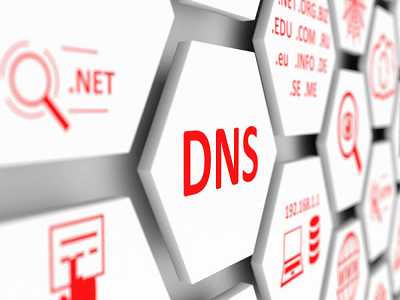How the K12 DNS Filter Keeps Kids Safe on the Internet while in School?
Kids in this technological era spend a lot of time online, either on their smartphones, tablets, or laptops. The internet is part and parcel of our culture, and students rely on it for homework, social networking, online gaming, and other activities. Monitoring children on the internet becomes very tricky. The internet offers them resources that range from current events, encyclopedias, and other materials. The fact that they can click from one site to another at will appeals to the children’s affinity for curiosity and impulsivity. While most people teach their children about the dangers of talking to strangers or opening doors if they are at home alone, they do not do enough to guide them on the dangers lurking on the internet. This is where the K12 DNS filter comes to help.

What is the K12 DNS Filter?
DNS filtering for K12 are necessary to filter out age-inappropriate content and to prevent children from accessing inappropriate content. A DNS (Domain Name Server) filter provides much-needed protection from internet threats such as malware, phishing attacks, botnets, and viruses. A K12 DNS filter blocks access to explicit and age-inappropriate content while providing a fast and safe internet experience for the kids. At the beginning of the 21st century, DNS filtering for K12 schools was primitive and expensive. The schools needed to buy hardware-based filters, the configuration was complicated, and they were not flexible. DNS filter for K-12 has evolved a lot since then, and the school cloud security options are fast to configure and easy to implement.
How a K12 DNS Filter Detects and Blocks Malicious Activity
Malicious people who create malware are continually thinking up new ways to circumvent the anti-virus defenses. They try in every way to ensure the malware codes run without detection on targeted machines. New malware, which has never seen the light of day, is not picked up by the AV-solutions, which are signature-based. The malware needs to communicate with its creator, and the source code must contain IPs and URLs for this purpose. When scanning files, the URLs can be detected, and if they are malicious, the data will be isolated by the K12 DNS filter.
To prevent this, malware creators make use of different techniques to mask the IPs and URLs inside the source code. They do this by changing the IP address into a decimal value and stored as XML. While most antiviruses might not detect the IP address in a decimal format, a malicious RL. When the malware needs the IP address, it is converted into its original format and turned again into digital format when it is no longer necessary. A K12 DNS filter can be used to block connections to these malicious servers. No matter how the IP or URL is hidden, a DNS query is necessary, and if the URL turns out to be malicious, the K12 DNS filter will block the connection before anything is downloaded.
How to Improve Cybersecurity in K-12 Schools via the K12 DNS Filter?
Schools are usually targets for hackers, with the staff being targeted by phishing scams, and being duped into depositing funds into the hackers’ accounts. DNS filtering for K-12 is critical, and since school budgets are very tight, it may be a bit of a stretch to improve cybersecurity. One way of improving cybersecurity in K12 would be:
- To tighten email security using a low-cost and sophisticated spam filtering solution. Investing in a K-12 DNS filter would be a start in the right direction.
- To invest in end-user training by improving staff cybersecurity awareness. The training needs to be done regularly to keep staff updated on the latest scams and threats.
Speak with NuEduSec about DNS Filtering for K12 Schools
In the year 2000, the Children’s Internet Protection Act (CIPA) was implemented. Schools had no choice but to introduce DNS filtering for K-12 so they could qualify for the E-rate program. Schools have to filter internet content to ensure that minors have no access to inappropriate material. K-12 DNS filter is one of the stringent controls put up to ensure that children only have access to educational content on the school network. NuEduSEC provides a variety of flexible and secure K12 DNS Filters that safeguard the minors while they are online. The cloud-native filtering tools allow school managers to closely monitor the students’ activities across multiple networks, platforms such as Windows, Android, iOS, MacOS, etc., and various devices.
NuEduSEC solutions report in real-time to ensure that students get protection from cybercriminals when using the school’s devices by putting a stop to the threats at the K12 DNS filter level. When the children go online, NuEduSEC’s DNS Filtering for K-12 compares the requested webpages against a vast cloud database that contains thousands of rated websites, URLs, and IP addresses.
Conclusion
School administrators find it easier to block suspicious content and to create a customized K12 DNS filter list that is age-appropriate for different ages. Contact NuEduSEC for all yout DNS filtering for K12.